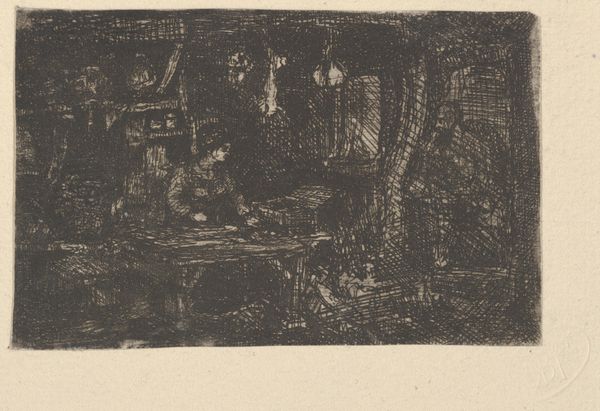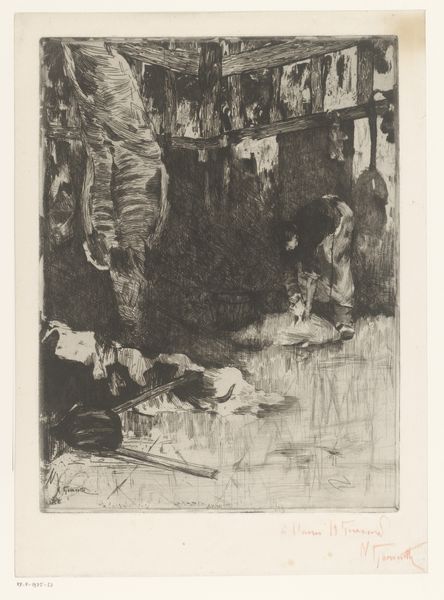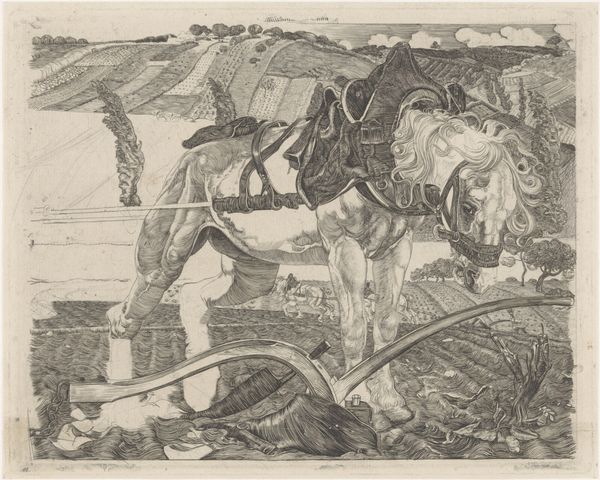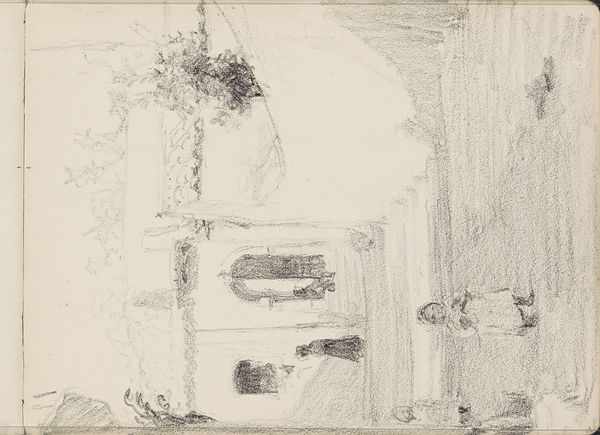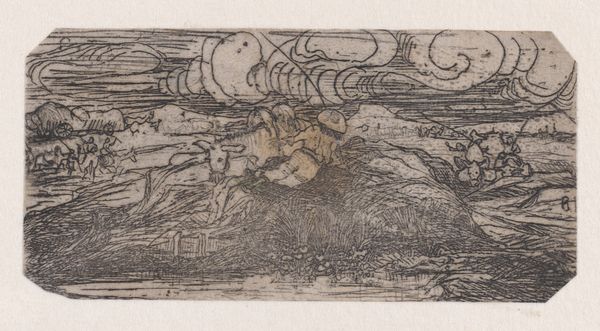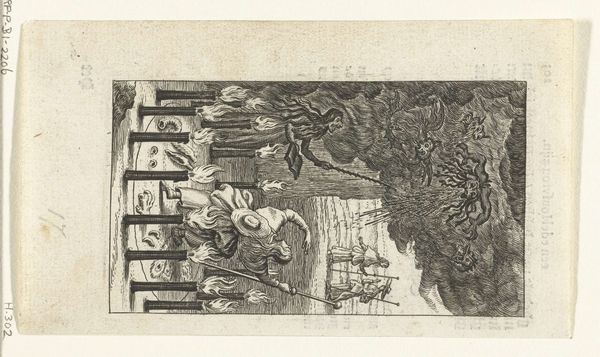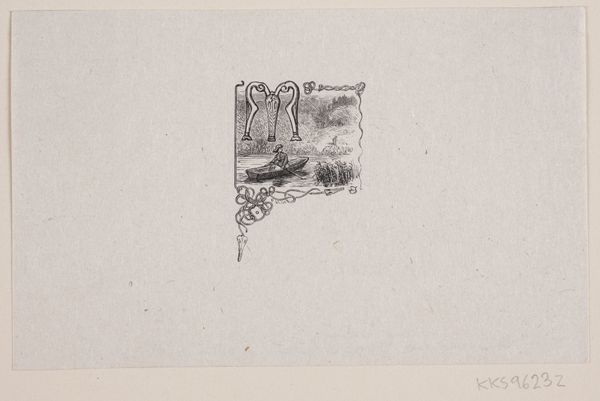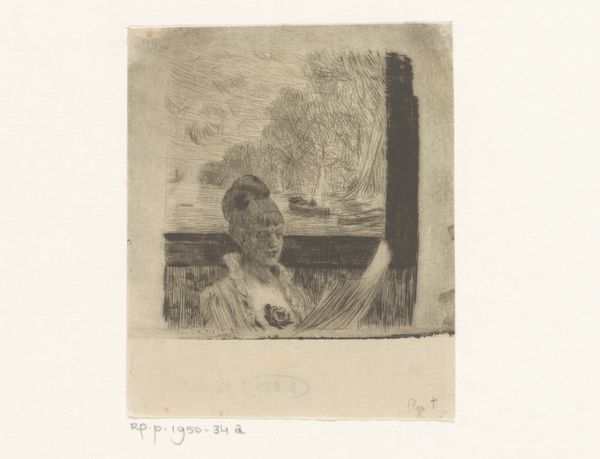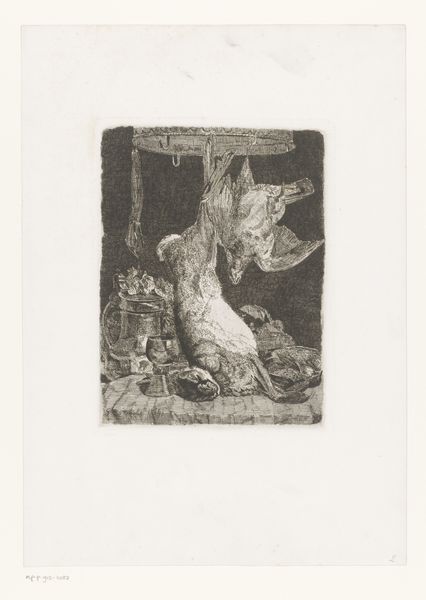
Dimensions: height 214 mm, width 162 mm
Copyright: Rijks Museum: Open Domain
Curator: Well, I must say, this drawing, “Young Man Tying His Tie in an Interior” by Willem Linnig the Elder just exudes a certain intimacy, don't you think? Created somewhere between 1829 and 1885. Look at that detail achieved with simple pencil and ink! Editor: Hmm, intimate… That’s one way to put it. I see a young man caught in a rather repetitive action; tying his tie and looking at his reflection, performing the mundane with practiced routine. It feels a little alienating, in a way. Curator: Perhaps. But consider the context! Linnig was a master of genre painting. He sought to capture everyday life, but with a hint of romanticism. The texture, the cross-hatching—it's so carefully crafted, wouldn't you agree? It speaks to the dignity in the common, don’t you think? The drawing uses what seems like layers of pencil sketch to create tone; this method would probably not render great results in larger scales, what do you think? Editor: Technically, of course, the command of line and shade is there, and that layering you mentioned does give some body to the subjects in view. I'm also admiring of the material presence it manifests with such few strokes of what must be pencils and charcoal. Still, I read it as more than just simple dignity. There's an inherent stiffness, something forced about that gesture. Notice his averted gaze? Perhaps an apprehension, or at the very least, the fatigue from repetitive motions. Curator: Oh, but doesn't that tension reflect the struggles of a young man finding his place in the world? That daily ritual of preparing oneself – the performance of identity! Plus, if you allow, it does provide a peek into domestic life in the 19th century, no? Imagine all those long days under layers of cravats. Editor: Performance indeed, but perhaps not so consciously. To me, it’s about the internalized expectations of class and status. Those carefully drawn lines are confining, in a sense. His averted eyes point to a mind far away, perhaps pondering on things beyond simple social performance, although those things, no doubt, influence him. But let's also zoom out; given the size and detail of the artwork, and also considering Linnig was so prolific during the era, could this work also serve as a model of its kind? Curator: A model? Intriguing thought! Regardless, what’s truly remarkable is how Linnig manages to distill such a rich narrative with just a few strokes of ink and pencil. This artwork embodies the emotional intensity that art evokes. And there lies the power of “Young Man Tying His Tie", wouldn’t you agree? Editor: Yes, whether the intention was the "intensity" itself, I admire its capacity for us to derive very unique perspectives from such minimalist choices. That's where this little artwork really succeeds.
Comments
No comments
Be the first to comment and join the conversation on the ultimate creative platform.
